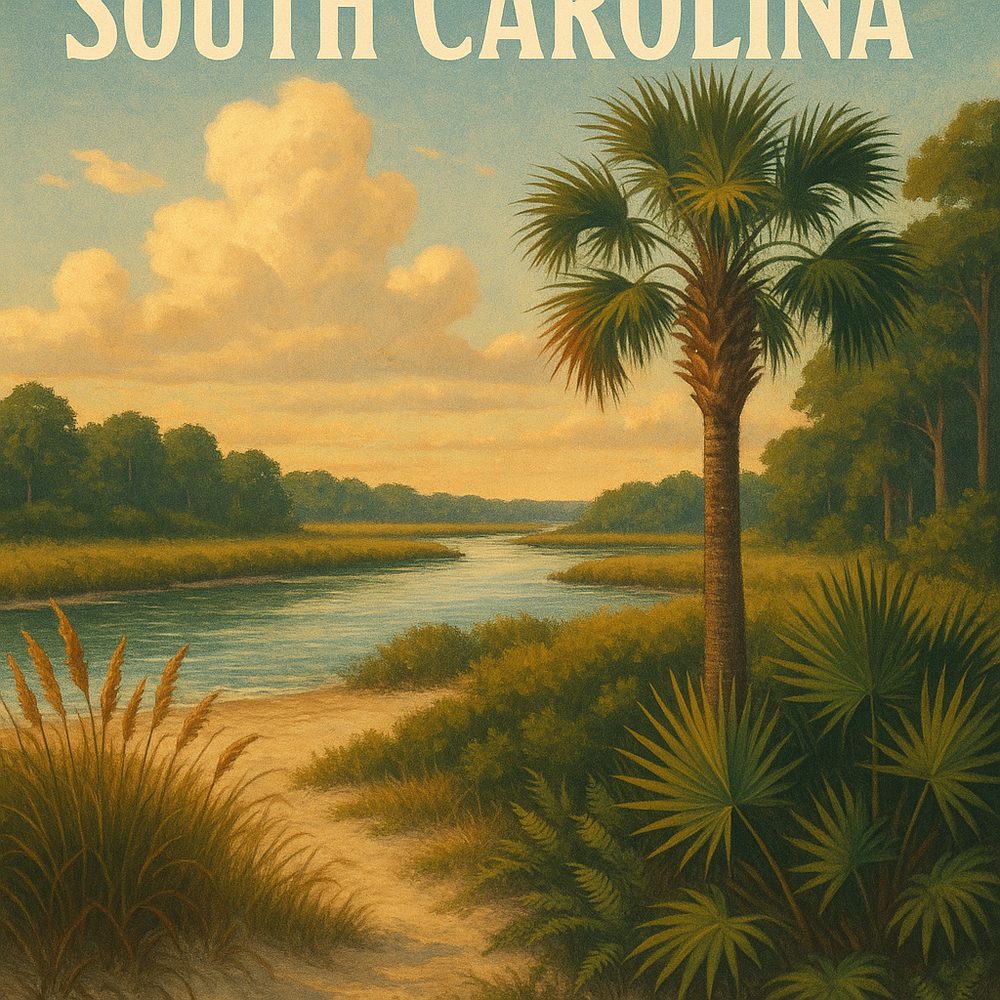South Carolina’s Role in American Music: From Jazz to Rock to Country

Charleston, a charming coastal city about two hours southeast of Columbia, stands as a living museum to South Carolina’s rich musical heritage, particularly in jazz. The city’s historic district, with its cobblestone streets and antebellum architecture, sets the stage for an immersive visit to the Charleston Music Hall. This intimate venue regularly hosts performances that echo the city’s deep jazz roots, where the syncopated rhythms trace back to the Gullah culture and the African American communities that thrived here. Visiting on a warm spring evening, when the air carries the salty tang of the nearby harbor, adds an enchanting backdrop to live sets that weave history and modernity together.
For those intrigued by the origins of rock music, Spartanburg, located about an hour northwest of Greenville, offers a treasure trove of stories and sounds. The Spartanburg Memorial Auditorium, a mid-20th-century landmark, was once a hotspot where early rock ’n’ roll legends performed. Today, it’s a place where visitors can catch concerts and exhibitions that spotlight the city’s contribution to the genre’s rise in the South. Walking its halls, you sense the echoes of youthful energy that propelled rock from local dance halls to national fame. Autumn is a particularly vibrant time to visit, as the cooler weather draws lively crowds and outdoor street festivals celebrating the city’s musical legacy.
Traveling south to the small town of Kingstree, about 90 minutes east of Columbia, visitors encounter a less conventional but equally important chapter in South Carolina’s country music history. The Williamsburg County Arts Council hosts events that celebrate the folksy tunes and storytelling traditions peculiar to the Lowcountry region. Here, the focus is on the authentic, grassroots sound that influenced the broader country genre. The nearby Black River offers a serene setting for a post-concert stroll, with its dense cypress trees and tranquil waters providing a natural soundtrack of rustling leaves and birdcalls. Late spring, when the riverbanks are lush and green, is an ideal time to experience this blend of nature and music.
In Greenville, nestled in the Blue Ridge foothills about 90 minutes northwest of Columbia, the Peace Center serves as a premier venue for a range of musical styles including jazz, classical, and country-infused Americana. The sleek modern architecture of the Peace Center contrasts beautifully with Greenville’s historic downtown, making it a cultural hub where music lovers can enjoy world-class performances. The center’s programming often includes tributes to South Carolina’s native musicians and composers, offering a layered appreciation of the state’s soundscape. Visiting during the fall harvest season, when downtown Greenville bursts with festivals and vibrant foliage, enhances the sensory experience of music and place.
Just outside Columbia, in the town of Batesburg-Leesville, lies the Dutch Square Mall area, home to several venues where live country music thrives, reflecting the state’s ongoing passion for this genre. This area serves as a local hotspot for emerging artists and traditional sounds, blending honky-tonk spirit with modern flair. After catching a show, visitors can explore the nearby Congaree National Park, a vast expanse of old-growth bottomland hardwood forest about 30 minutes southeast of Columbia. The park’s boardwalk trail offers a peaceful way to unwind, surrounded by towering trees and the calls of native wildlife. The late summer months, with their warm evenings and early sunsets, provide the perfect atmosphere for a day combining music and nature.
In the lowcountry town of Beaufort, about 45 minutes south of Savannah, Georgia, the Beaufort Music Festival celebrates the area’s eclectic musical influences, from jazz to blues to gospel. The festival often centers around the historic downtown waterfront district, where antebellum homes create a stunning backdrop for outdoor concerts. Walking through the district’s shaded streets, visitors not only hear music but also feel the deep cultural currents that shaped it. The mild winter climate here makes a winter visit particularly pleasant, allowing open-air shows to flourish when other regions are too chilly for outdoor gatherings.
Finally, Columbia’s South Carolina State Museum provides a comprehensive exploration of the state’s musical evolution through its permanent exhibits on cultural history. Situated in the heart of the capital, about 90 minutes from the mountains and coast alike, the museum features artifacts from local musicians, historic instruments, and multimedia presentations on the state’s influence across genres. A dedicated gallery traces South Carolina’s journey from spirituals and work songs to mainstream country and rock. Spending a quiet afternoon here during the cooler months offers a well-rounded perspective on the soundtracks that have shaped not just the state but American music history as a whole.
Each of these places offers a unique portal into South Carolina’s vibrant and diverse musical tradition. Whether you’re wandering Charleston’s jazz-filled streets, tapping your feet in Spartanburg’s auditorium, or savoring a country ballad in Kingstree, the state invites visitors to experience the rhythms that have left an indelible mark on America’s musical soul.